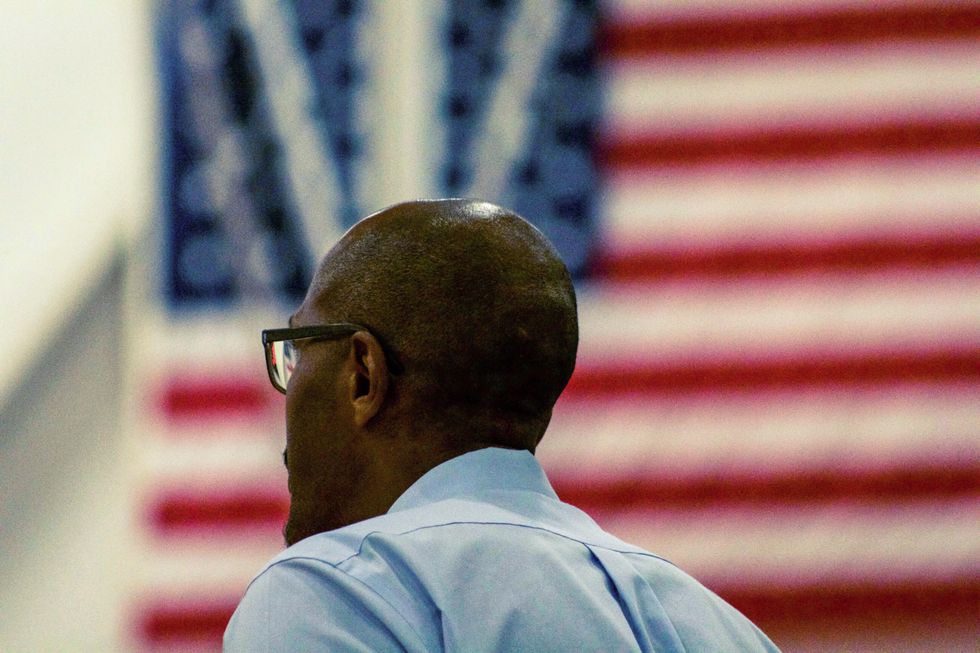My favorite place to go in D.C. is the Smithsonian's National Museum of African American History and Culture, which is widely known in short as the NMAAHC. About a year and a half ago, I had the great privilege to experience this new and historical remnant of history during its opening weekend in September 2016.
At that point, having spent my entire life subscribing to my status as an African American and learning of the powerful but unfortunate past, I had never experienced the opportunity to actually stand within a piece of history that would be dedicated to uncovering, delivering, and portraying the historical experiences of African Americans from the beginning of their insemination into the United States and well into their present-day experience.
Before I can even discuss the inside of the museum, I have to point out the beauty that is the actual building: its architectural style, location, and historical symbolism is essential to the purpose of the museum. The physical design of the building remains symbolic to the past, present, and future of the African American experience in the United States.
When looking from the inside, visitors are able to look North and view the White House, which is symbolic to 2008, the U.S. appointment of its first African American president, Barack Obama. From there, to the south and the west of the building, visitors can view the monuments of Martin Luther King Jr., Abraham Lincoln, Thomas Jefferson, and George Washington, whose contributions to the African American culture and history is rightfully noted and explained within the museum’s displays. The building itself was designed so that visitors themselves, depending on their set location within the building, can look through a window, and be reminded of the essential symbols of American history that have shaped and carved the African American experience from the beginning of America to the present-day.
When I first stepped in, I couldn’t fathom the sight that met my two eyes. The physical manifestation of all that I have learned so far about my identity was right in front of me. The museum itself is comprised of five individual and unique floors and each floor transports you to a different time period in African American history.
Starting from the beginning, the first floor, visitors are graced with historical remnants of the beginning of the slave trade in general, long before the construction of the nation of the United States. As visitors move up through the remaining floors, they meet the creation of the United States, the beginning of the slave trade within the United States and the emancipation of the slaves as they reach the second floor.
The third floor focuses a lot on the legal realities of African Americans in the United States, as it displays the following legal documents: the 13th, 14th, and 15th amendments, which were an amendment to the Constitution to create a legal assignment of humanity of African Americans shortly following the abolishment of slavery, to provide legal tactics for their citizenship, and to provide the legal opportunity for African Americans to benefit from the most prominent aspect of citizenship in America: the ability to vote.
The fourth and fifth floors mostly covered the mid-20th century to present-day African American history, beginning with the Jim Crow Era, well into the Civil Rights movement, into the growing present-day issues of police brutality, new forms of institutional racism, and the overarching issue of the growing number of black people in incarceration. There is also a section that displays black pop culture such as singers, poets, rappers, famous black icons, etc… and the role that pop culture played and continues to play in the long-standing experience of African Americans today.
My favorite part of the museum was on the fifth floor, which is the most contemporary part of the overall building, in which there is a display dedicated to Barack Obama. Personally, Barack Obama for me represents the zeal and tenacity that has long been a characteristic of the African American experience.
Throughout history, as shown through the variety of displays within the museum, the African American experience has been one full of immense struggle, drive, and milestones that have shaped the experience to be what it is today. Without the many people who gave their time, lives, and freedom to stand up for their own humanity, I would cease to even be where I am, let alone, to even exist.
Everyone should visit the African American Museum of History and Culture. This museum is not a representation of just African American experience, this museum represents American history.
Going to this museum helped me to form a better well-rounded understanding of American history and its direct relevance to present-day American life. This museum tells a larger story, not only of African Americans themselves but of American history. There is essentially no speaking of American history without the roles of African Americans, and to speak about the present-day position of the United States of America, the African American experience must be discussed and properly noted as a rightful catalyst in the nation that we, as Americans, hold near and due to our heart. To leave the African American experience out of the discussion of American history would be to leave out an entire side of history, which would produce an incomplete replica of American history.
Stop by and visit the museum, try to immerse yourself in this side of American history, and I promise you will walk out with a better understanding of America’s history as a whole.


















